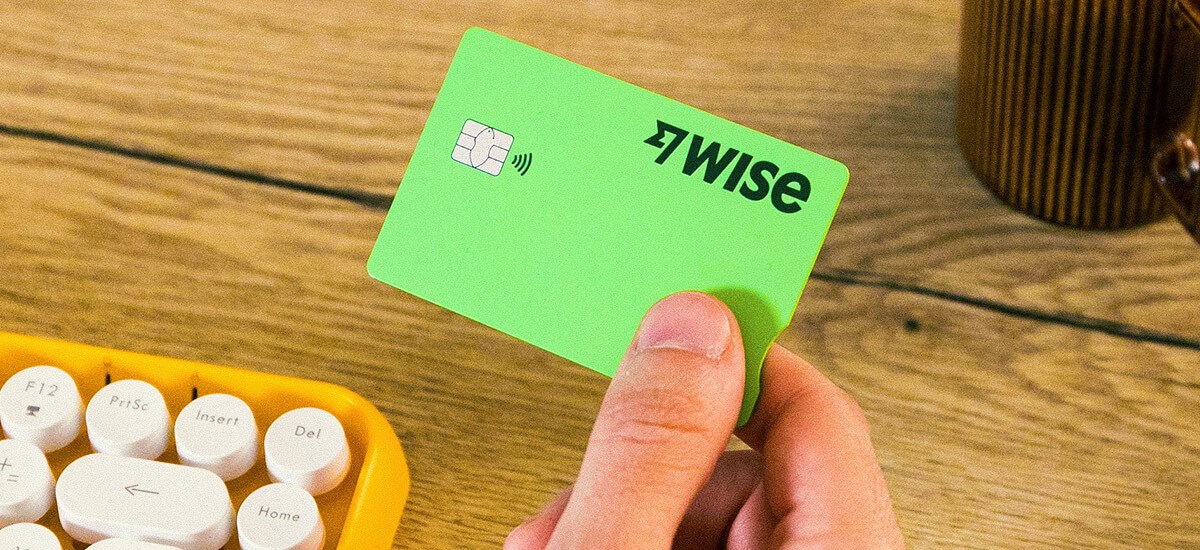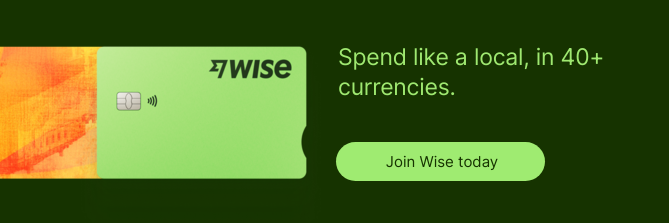
Travelling to South Korea from Malaysia? Here’s everything that you need to know
Planning to travel to Korea from Malaysia? South Korea is a dream destination for many - whether you’re seeking a quiet beachside retreat, up for a few days of eating the best of Korean cuisine in some of the country’s vibrant cities, or looking to learn more about your favourite K-pop idol’s roots.
No matter what you’re planning on doing in Korea, you need to make sure you have all the documents needed to cross the border. This guide covers what you need to know - plus we’ll look at a few handy apps, like the Wise app, which can help you do more with your money once you land in Korea.
| Table of contents |
|---|
Updated Korea entry requirements from Malaysia
Korea is a super popular destination for Malaysian travellers - but what are the Malaysia to Korea visa rules, and what restrictions or covid protocols are still in place? Do Malaysians still have to apply for documents like the K-ETA and Q-code?
Firstly, the good news is that at the time of writing (6th January 2024), there’s no longer any need to have covid vaccination proof, PCR test or quarantine to enter Korea. Together with the relaxation of covid-related measures, travellers also no longer need to apply for a Q-code when visiting Korea1.
Instead, in most cases, if you’re a Malaysian entering Korea as a tourist, you’ll just need to register in advance for a K-ETA (Korean electronic travel authorisation). The K-ETA is used in place of a full visa, and only offered to citizens of eligible countries.
The exact Korea entry requirements you need to know about will depend on your age and nationality. Here’s a run down of what applies if you intend to travel to Korea from Malaysia:
- Malaysian travellers aged 17 and under - a valid passport is required, no K-ETA is needed
- Malaysian travellers aged 18 - 64 - a valid passport and K-ETA is needed
- Malaysian travellers aged 65 or over - a valid passport is required, no K-ETA is needed
- Non-Malaysians may need a K-ETA or visa, or may have this requirement waived - you can get all the information you need from the Embassy of the Republic of Korea1 in Malaysia based on your nationality
Bear in mind that if you’re travelling to Korea for work, study, or to stay long term, the chances are that other visa rules will apply. Be sure to check these out with the Korean Embassy in good time to get your application processed before you travel.
In fact, as we all learned during the global pandemic, travel rules can change abruptly and with little notice - so no matter what your nationality or age, if you’re travelling to Korea from Malaysia it makes sense to double check the most up to date rules for entry, with Korea travel updates from the Embassy of the Republic of Korea in Malaysia.
We’ll dive into the K-ETA, including what it does, how to get one and what it’ll cost you, next.
How can I apply for K-ETA?
So, if you’re travelling to Korea from Malaysia, a K-ETA is likely to be the key document you need to get lined up in advance. A K-ETA is intended for people travelling to Korea as a tourist, to visit relatives, or to attend an event or meeting. This can include attending a business meeting - but a K-ETA doesn’t cover profitable activities, so if you’re going to Korea to take up employment you’ll need to get a different visa type.
In most cases a K-ETA is valid for 3 years from the point of issue, and allows you to stay in Korea for up to 3 months at a time2. K-ETAs are offered on a multi-entry basis. That means you can take several trips to Korea using your K-ETA if you’d like to, as long as your passport remains valid and none of your personal details change. Full eligibility details and rules are available on the K-ETA application guide.
You’ll apply for your K-ETA online, with the following documents and details2:
- Your valid passport
- Your email address
- A passport style photo (this can be a file on your computer, or you can simply take a photo with your smartphone if you’re applying on that)
The photo you use should show your face from forehead to chin, but you can submit an image wearing a hijab or other religious headwear if you’d like to3.
There’s also a fee to pay - 10,000 KRW (around 35 MYR at the time of writing). You’ll be offered the option to pay the application fee using a credit or debit card issued on a major global network when you submit your application.
It’s important to apply for your K-ETA in good time. In fact, the Korean Embassy in Malaysia1 suggests applying a month in advance if you can. In most cases, application processing takes 72 hours - but building in a bit of extra time is a good idea to make sure your trip goes smoothly.
| 💡 Enjoy low, transparent fees and the mid-market exchange rate when you use the Wise Card for your K-ETA application and overseas spending |
|---|
Flying from Malaysia to Korea
Most flights from Malaysia to Korea will go from Kuala Lumpur to Seoul, allowing for easy internal transfers in Korea by train or connecting flight. You can take a non-stop flight from KL to Incheon airport (ICN) with AirAsia, Malindo Air, Malaysia Airlines or Korean Air among others. Direct flights take from 6.5 hours to 6.75 hours usually.
On arrival you can pick up a train to other popular cities in Korea from Seoul station, or catch domestic flights to popular destinations like Busan and Jeju at Gimpo airport (GMP). Once you’re in Korea, getting around is fairly easy - flying from GMP to Busan takes about an hour, and taking a train for the same journey will not take much more than 2 hours.
Unfortunately, if you’re planning on travelling to the UNESCO recognised Jeju Island, there are no direct flights from Malaysia at the time of writing. However, you can get an internal transfer within Korea, or you could pick up a Scoot flight from Changi Airport in Singapore if you’d prefer. A flight from GMP to Jeju takes little over an hour, making this a feasible option, even for a shorter trip to Korea. Bear in mind that since September 2022, it’s been mandatory to have a visa or K-ETA to enter Jeju Island, either directly from abroad, or via a local transfer within Korea4.
What can I bring into Korea?
As with all international travel, it’s important to make sure you don’t accidentally take any prohibited items with you when you cross the border. You can get the full details on what you’re able to bring into Korea from the Korea Customs website5. As you’d expect, there are some items which are prohibited - such as forged money, some which must be declared - such as any food items, and some which have set tax exemption limits - such as cigarettes and alcohol.
Exactly what you’ll need to do will depend on what you’re taking with you, so do check out all the details online before you travel to avoid holdups, fees or other issues on arrival.
Apps to download before travelling to Korea
Getting excited about your trip from Malaysia to Korea? Check out these Korea travel apps which can make it easier and cheaper once you’re there.
To get around: Kakao Maps or NAVER Maps

If you’re used to relying on Google Maps to get from A to B, you may be surprised to learn that Google maps isn’t really used much in Korea. Instead, a couple of local map apps have taken over the market - Kakao Maps6 and NAVER maps7. These offer accurate locations, live travel information, reviews and recommendations of local restaurants and more.
Both apps are available in English, and should respond automatically to the language your device is set to - so if you’ll usually use an English language interface on your phone, you should find the map defaults to that automatically. Easy.
To translate: Papago

How’s you Korean? If you might struggle with the language when you arrive in Korea, Papago8 is another great local app to know about. From the same people behind NAVER Maps, Papago users can scan text, upload a photo, use speech-to-diction, or manually input characters to get a translation to or from Korean.
To stretch your dollar: Wise

Korea isn’t known for being a bargain destination. Stretch your dollars with Wise.
Wise offers smart digital multi-currency accounts you can use to hold and exchange KRW. Just add your money in MYR and switch over in the Wise app - or let the auto conversion tool do it for you when you use the Wise card. Either way, you’ll get currency conversion which uses the mid-market exchange rate, with low, transparent fees from 0.43%9.
Cash is still going to be important - especially for shopping in street stores and markets. Use your Wise card to make 2 free ATM withdrawals, to the value of 1,000 MYR every month, and further withdrawals which incur a low fee.
While some stores in Korea provide contactless payment options, most still use physical cards for a chip and PIN payment. Order your Wise card in advance to make sure it arrives on time for your trip.
You’ve now got all you need to get prepared for your upcoming trip to Korea. Use this guide to get your K-ETA organised, and don’t forget to check out Wise to make your money go further - in Korea and beyond.
Sources:
- Korea Entry Requirements - Embassy of the Republic of Korea in Malaysia
- K-ETA application guide
- K-ETA FAQ
- Travelling to Jeju - Embassy of the Republic of Korea in Malaysia
- Korea Customs info
- Kakao Maps
- NAVER Maps
- Papago
- Pricing/fees: Please see Terms of Use for your region or visit Wise Fees & Pricing for the most up to date pricing and fee information
*Please see terms of use and product availability for your region or visit Wise fees and pricing for the most up to date pricing and fee information.
This publication is provided for general information purposes and does not constitute legal, tax or other professional advice from Wise Payments Limited or its subsidiaries and its affiliates, and it is not intended as a substitute for obtaining advice from a financial advisor or any other professional.
We make no representations, warranties or guarantees, whether expressed or implied, that the content in the publication is accurate, complete or up to date.

